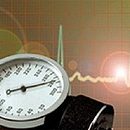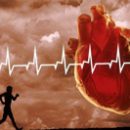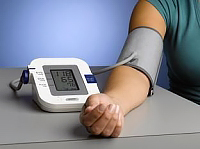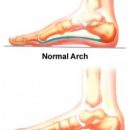Heart blocks develop when stopping cardiac activity. The main method of diagnosing the blockade is Holter monitoring. The treatment of the blockade is carried out with the help of drugs, electric stimulation is shown in emergency situations.
Content
Heart Blocade Concept
 Under the term «Blockade Heart» understand the stop of cardiac activity. Heart stop duration can reach 8-10 seconds. That is, the blockade of the heart is a deterioration or a complete loss of the ability of one or another portion of myocardium (heart muscle).
Under the term «Blockade Heart» understand the stop of cardiac activity. Heart stop duration can reach 8-10 seconds. That is, the blockade of the heart is a deterioration or a complete loss of the ability of one or another portion of myocardium (heart muscle).
Heart activity is possible only due to the fact that he has his own «brain», Heart rate regulating frequency. This is a sinus knot. It has the ability to rhythmically generate electrical impulses, which, how the circles from the stone thrown into the water, spread over the myocardium of the atria and ventricles, causing them to reduce.
Sinus knot, asking the rhythm of the work of the whole heart, and is called respectively - the driver of the rhythm. And although almost any myocardial cell can independently generate electrical impulses, the electrical activity of the sinus node is dominated by the activity of all other heart cells.
If the work of the sinus node is broken, then new sources of electrical pulses may appear in various sections of the heart muscle (myocardium), which compete with a sinus node or even suppress its activity. Can be blocked and the distribution of the wrestling of the heart activation. All of these unpleasant and low-fat phenomena are accompanied by heart rate disorders - arrhythmias, and in the worst case - the blockades of the heart.
Causes of blood blockade
Heart blockers may occur in atherosclerosis, angina, myocarditis, cardiosclerosis, myocardial infarction, as well as overdose or improper use of certain drugs.
In some cases, heart blocks may be caused by hereditary predisposition.
Variants of the Blocade of the Heart
The blockade of the heart is classified either by what the signal does not pass on the heart, or according to the degree of severity, by the power of the blockade. Depending on how developed the blockade is distinguished:
- blockade I degree, t.E. Pulses are conducted with a significant delay
- blockade II degree - incomplete, t.E. Part of the pulses is not performed at all
- blockade III degree - full, t.E. impulses are not conducted at all
With a complete blockade of the heart, the frequency of ventricular cuts may fall to 30 per minute and below (and the normal frequency in an adult is at rest is 60-80 abbreviations per minute). If the interval between abbreviations reaches a few seconds, the loss of consciousness is possible («Cardiac fainting»), a man pale, convulsions can begin - these are the symptoms of the so-called Morgana-Adams-Stokes attack), the result of which can be fatal outcome.
All blockages can be resistant (exist permanently) and transient (arise only at some moments), and the congenital full transverse blockade is very rarely found.
Diagnostics of the blockade of the heart
Heart blocks are dangerous by their consequences, up to death, so do not delay the campaign to the cardiologist in the presence of rhythm disorders and do not bring your heart to the state of the heart blockade. Patients with heart blocks may also need a consultation of an athmologist.
The usual electrocardiogram allows you to assess the reductions of the heart only at the time of the study, while the blockade of the heart may occur periodically. Therefore, the so-called Halter monitoring and Tredmill test is used to identify transient blocks. To clarify the diagnosis, the cardiologist may also appoint echocardiography.
Treatment of blockade
In the occurrence of the attack of Morgali-Adams-Stokes, a person must be put and cause «Ambulance». Most blockades are able to overcome constant drugs. However, full blocks are an indication to the valve of the artificial driver of the rhythm, to the use of temporary or constant ventricular electrostimulation.
Since some drugs used to treat heart diseases contribute to the occurrence of blockades, it is necessary to accurately comply with the doctor prescribed by the doctor and the reception time, as well as coordinate with the cardiologist of the medicine appointed by other doctors.









